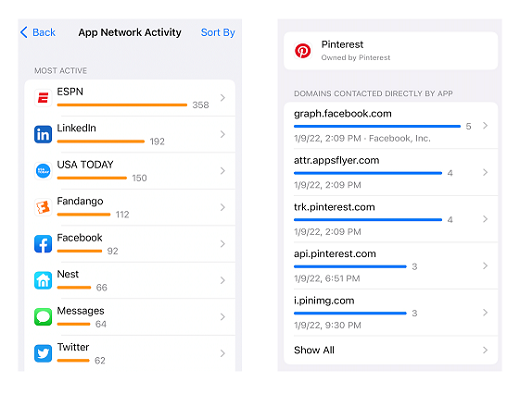Allow Apps to Request to Track on or Off
In the era of ubiquitous data collection, it’s crucial to have control over how our personal information is used. One significant step towards this is the ability to allow or deny apps from tracking our activities across other apps and websites. This feature, often referred to as “Allow Apps to Request to Track,” empowers users to make informed decisions about their privacy and data usage.
In this comprehensive guide, we’ll explore the intricacies of this feature, including its historical context, technical details, and implications for user privacy. We’ll also provide practical tips and expert advice to help you navigate this important aspect of your digital life.
A Deeper Dive into “Allow Apps to Request to Track”
The “Allow Apps to Request to Track” feature allows users to decide whether or not an app can track their activities across other apps and websites. This tracking enables apps to collect data on user behavior, preferences, and interactions, which can then be used for targeted advertising, personalized experiences, and other purposes.
Historically, app tracking has been a common practice without explicit user consent. However, growing awareness of data privacy concerns has led to increased demand for user control over their information. In response, Apple introduced the “Allow Apps to Request to Track” feature as part of its iOS 14.5 update in 2021, and Google followed suit with Android 13 in 2022.
Understanding the Technical Aspects
Technically, “Allow Apps to Request to Track” works by requiring apps to display a prompt asking for user permission to track their activities. Users can choose to “Allow” or “Deny” this request. If the user denies tracking, the app cannot collect any data from the user’s device, including location, browsing history, and app usage.
The tracking permission status is stored locally on the user’s device and cannot be accessed by other apps or websites. This ensures that users have complete control over their tracking preferences and can easily modify them at any time through the device’s settings.
Implications for User Privacy and Control
The “Allow Apps to Request to Track” feature has significant implications for user privacy and control. By giving users the ability to choose whether or not apps can track their activities, it empowers them to protect their personal information and prevent it from being used without their consent.
This feature also helps to level the playing field between users and app developers. With more control over their data, users can negotiate better terms with apps, such as requesting more personalized experiences or limiting data sharing for reduced advertising. Ultimately, it creates a more balanced and transparent ecosystem where users have a say in how their information is used.
Tips and Expert Advice for Navigating Privacy Settings
To make the most of the “Allow Apps to Request to Track” feature, it’s important to be aware of the following tips and expert advice:
- Review App Privacy Labels: Before downloading or using an app, check its privacy label to understand what data it collects and for what purposes. This provides transparency and helps you make informed choices.
- Customize Tracking Settings: Regularly review your tracking settings and adjust them based on your comfort level with data sharing. Consider denying tracking for apps you don’t use frequently or if you’re concerned about privacy.
Frequently Asked Questions
- Q: What happens if I deny tracking?
A: If you deny tracking, the app cannot collect any data from your device or track your activities across other apps and websites.
- Q: Can I change my tracking preferences later?
A: Yes, you can easily change your tracking preferences at any time through your device’s settings. This allows you to adjust your privacy settings as needed.
- Q: Is it safe to allow some apps to track me?
A: Whether or not you allow tracking is a personal decision. Consider the benefits of personalized experiences and targeted advertising against the privacy concerns associated with data collection.
Conclusion
The “Allow Apps to Request to Track” feature is a powerful tool that empowers users to take control of their digital privacy. By understanding the technical details, implications, and expert advice, you can make informed decisions about which apps can track your activities and protect your personal information.
As technology continues to evolve and the landscape of data collection changes, it’s crucial to stay informed and vigilant about your privacy. By actively engaging with these settings, you can safeguard your data and create a more transparent and balanced digital ecosystem.
Are you interested in learning more about privacy settings and data protection? Share your thoughts and questions in the comments below, and let’s continue the conversation.

Image: help.pinterest.com

Image: app.urlgeni.us
Pinterest Developers At the top, select Tracking. (Image credit: Future) Turn off Allow Apps to Request to Track if you don’t want any apps to track your activity. (Image credit: Tom’s Guide) If you have iOS 14.5 and